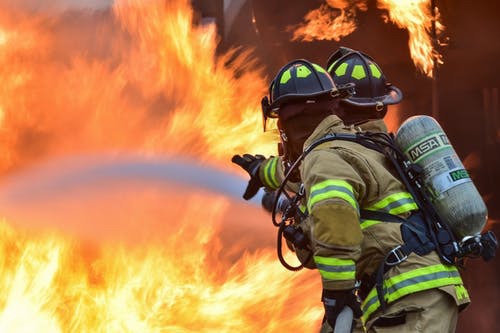
When the unexpected happens, and your property is soaked because of water damage, a flood of questions likely come to mind. But the most pressing among them is, ‘How long will it take to get things back to normal?’ The truth is, there’s no one-size-fits-all answer to this question, as it depends on several factors. But don’t worry; you’re in the right place for some clarity on the road to restoration.
Typical Restoration Timeframes
Now, let’s talk numbers. Based on the combined experience of many homeowners and restoration professionals, here’s a breakdown of what you might expect:
1. Minor Damage
For less severe cases, such as a small pipe burst, you look at a few days to a few weeks. This includes water removal, drying, and repairing limited areas of your property.
2. Moderate Damage
If you’re facing moderate damage, where multiple rooms are affected, or there’s damage to flooring and walls, the process can take two to four weeks. Additional time is needed for more thorough drying, cleaning, and restoring the more substantial damage.
3. Major Damage
Restoration can extend beyond a month in the event of significant structural damage or large-scale water infiltration. This timeframe accounts for the complete drying of the premises, thorough mold prevention treatments, structural repairs, and possibly reconstruction.
Sometimes, properties face double jeopardy due to fire and water damage. When that happens, the restoration process becomes more specialized. Services offered by companies like PuroClean in Key Biscayne, FL, are essential when precise coordination and expertise in fire and water restoration are required. This combined approach is critical in minimizing the impact on your property and shortening recovery time.
What is the Property Restoration Process?
Before diving into the timeline, let’s consider what restoring water-damaged property involves. Restoration is a multi-step process that may include water extraction, drying, cleanup, repair, and sometimes reconstruction. How each step is tackled can affect the overall time necessary to restore a property fully.
1. Initial Assessment
The first step is usually an assessment by professionals who will evaluate the extent of the damage. This inspection will help establish a plan of action and estimate the time required for each process phase.
2. Water Extraction and Drying
Once there’s a strategy in place, you can expect water extraction to start promptly. After that, industrial dryers and dehumidifiers are typically brought in to dry everything out—a crucial step that could take a few days to several weeks.
3. Cleaning and Sanitizing
After drying, the affected areas must be cleaned and sanitized to prevent mold growth and other health hazards. This can be a quick process or extend the timeline, depending on the level of contamination and size of the affected area.
4. Repair and Restoration
The lengthiest phase is often the repair or replacement of damaged items, ranging from a quick fix to a prolonged effort lasting several months in severe cases where large-scale reconstruction is required. Seeking the help of restoration professionals is crucial in managing these variables effectively. This is where teams like PuroClean restoration experts step in. Their expertise in gauging the damage and providing a clear action plan can save you time and anxiety. With their help, a seemingly overwhelming task becomes a managed, step-by-step recovery process.
Factors Affecting Restoration Time
Several vital variables can influence how long it’ll take to make your property whole again. Consider these elements:
-
The Extent of Damage: Minor leakage affects restoration time differently than extensive flooding.
-
Type of Water: Clean water from a burst pipe generally leads to a quicker cleanup than sewage-related backups.
-
Size of Affected Area: Naturally, larger areas take longer to restore.
-
Structural Issues: If the water has compromised the property’s structure, expect a lengthier restoration process.
-
Availability of Materials: The wait for building materials or specialty items can sometimes extend the timeline.
-
Weather Conditions: High humidity or additional water intrusion from ongoing storms can slow drying and repair.
All these factors combine uniquely for each situation, making the restoration period differ from one property to another. If water is left standing or areas remain damp, mold can become a big issue, compounding your problems. Mold not only poses health risks but also complicates restoration.
Companies specializing in mold remediation can address these concerns. When dealing with mold damage Miami Beach, for example, it’s crucial local expertise is applied to treat and restore the property to a safe environment effectively.
Timelines of the Restoration Process
One thing’s for sure: patience is a virtue when dealing with water damage restoration. It’s not only the physical repair that counts but also the peace of mind that comes from knowing the job is done right. Always communicate openly with your restoration team; remember, the goal is to make your property safe and comfortable again. With this guide, you’ve got a roadmap for what to expect, and with the right help, you’ll get there—one step at a time.
Final Remarks
Restoring water-damaged property is often a formidable task. Yet, understanding the variables, consulting with the pros, and knowing ballpark timeframes can alleviate some of that burden. While it might be a winding road back to normalcy, you can navigate it successfully with diligent action and expert advice. And ultimately, the comfort of your fully restored haven will be worth every effort invested in the process.

